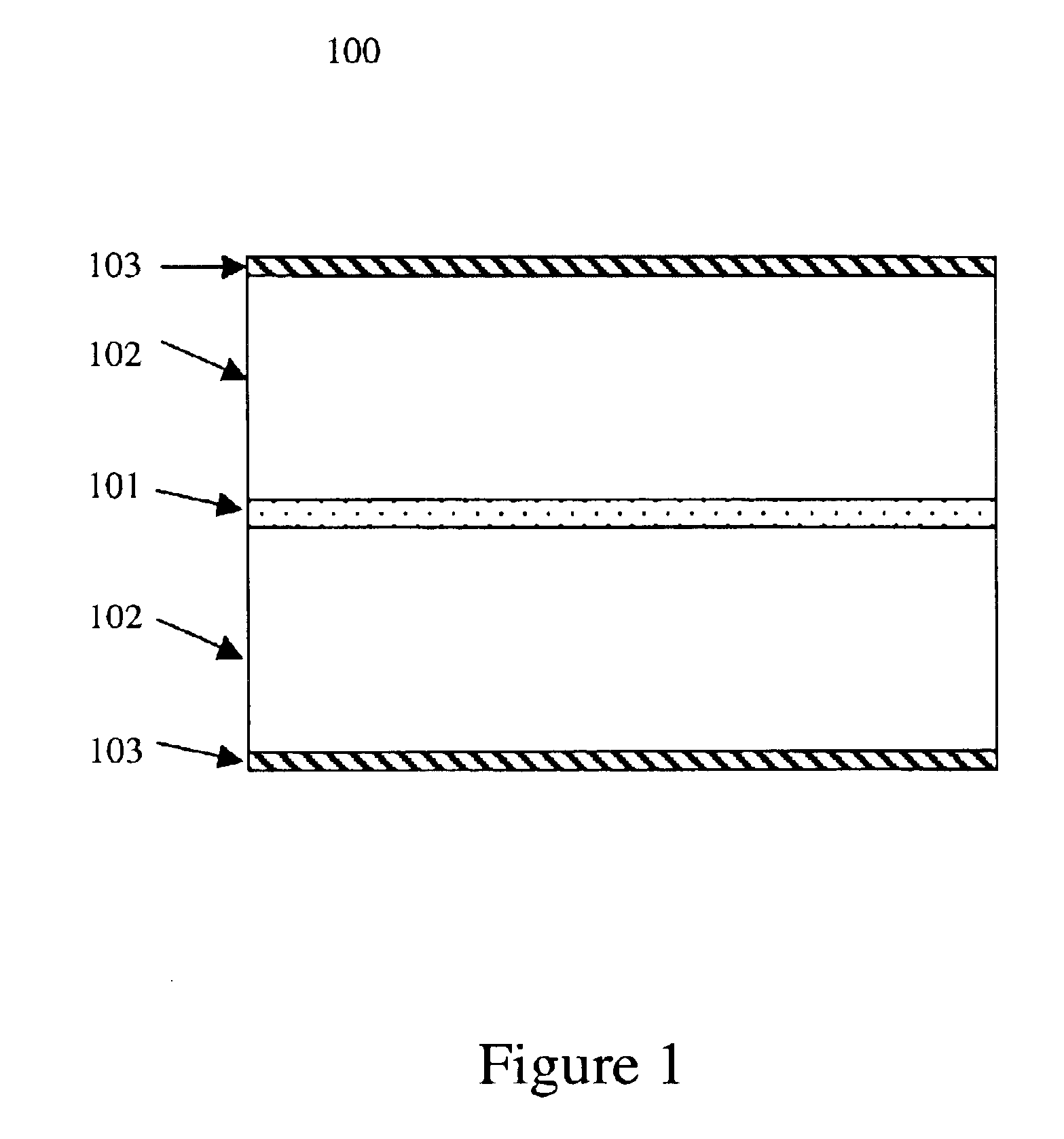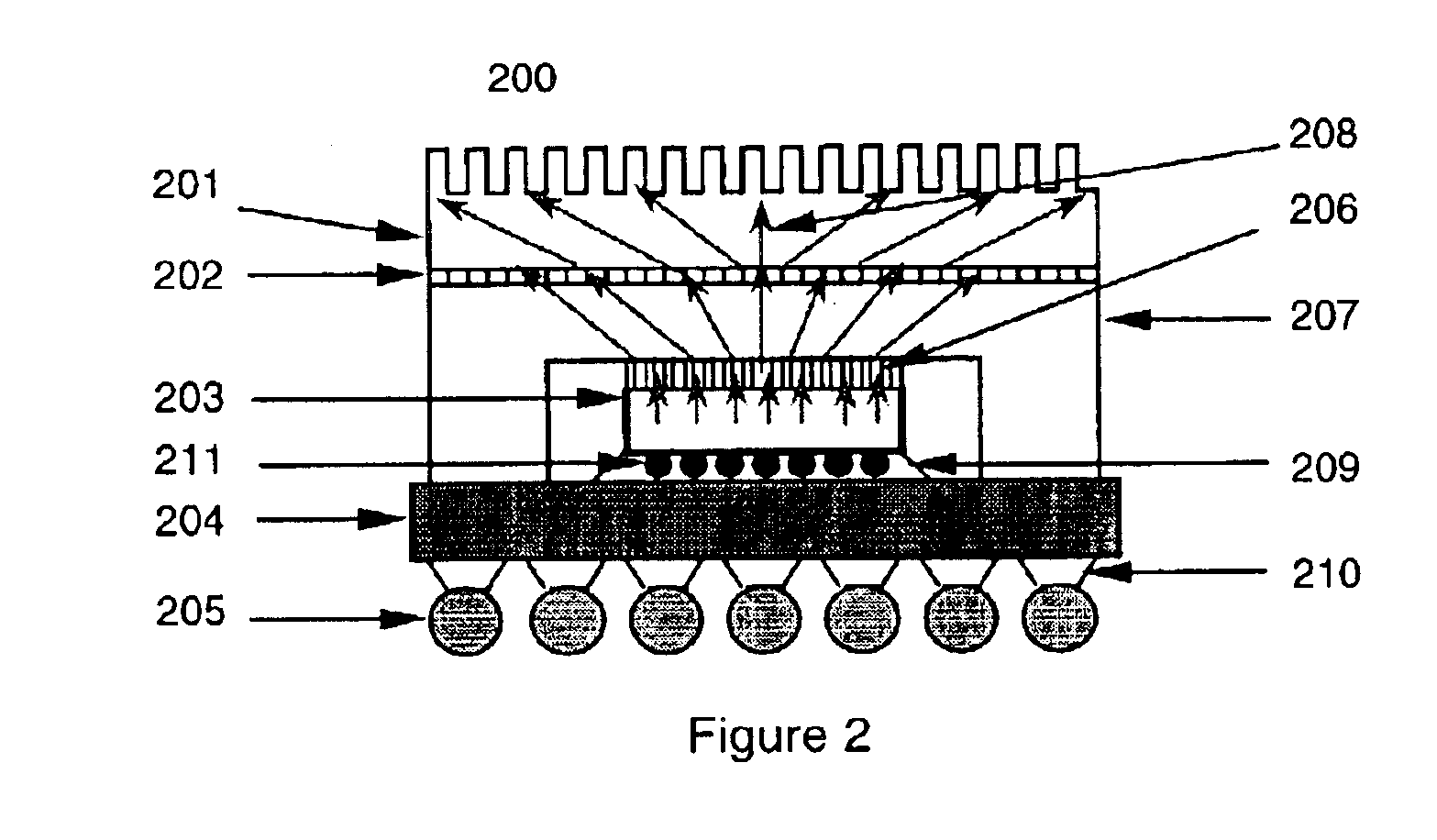Thermally conductive phase change materials
a phase change material and thermally conductive technology, applied in the direction of solid-state devices, heat storage plants, synthetic resin layered products, etc., can solve the problems of affecting the performance of electronic components, generating heat in the operation of electronic components, and negatively affecting the mean time between failures
- Summary
- Abstract
- Description
- Claims
- Application Information
AI Technical Summary
Benefits of technology
Problems solved by technology
Method used
Image
Examples
reference example 1
Mathis Hotdisk Method
[0104]Thermal conductivity measurement of the phase change materials is carried out on the Mathis Hotdisk equipment. Technical details of the method can be found in the instrument menu from the Mathis Instrument LTD. The technique can also be found in a publication by Craig Dixon, Michael Strong, and S. Mark Zhang, Thermal Trends, Vol. 7, No. 5, page 1.
example 1
PCC with Uncrosslinked Silicone Wax
[0105]An uncrosslinked alkyl methyl silicone wax is prepared from C30+ alpha-olefin (Chevron Phillips Chemical Company) and Me3SiO(SiHMeO)10SiMe3.
[0106]In a 5 ounce cup, 7.5 grams (g) of the uncrosslinked alkyl methyl silicone wax and 0.5 g octadecyltrimethoxysilane (from Gelest, Inc.) are heated up to 100° C. In a separate container, 130 g Al2O3 filler mixture is heated to 100° C. The Al2O3 filler mixture is a 1:1 mixture of CB-A20S and Al-43-Me aluminum oxide fillers from Showa-Denko K. K. The Al2O3 filler mixture is gradually added into the cup, and the PCC is mixed with a Hauschild centrifugal mixer.
[0107]During the whole filler addition and mixing process, the temperature of the PCC is maintained above approximately 90° C. Below 75° C., the PCC is a solid, but above that temperature, the PCC is a viscous creamy material. The viscosity of the PCC is measured on a Rheometric Rheometer and depends on the shear rate. At 90° C., the PCC has a visco...
example 2
PCC with Crosslinked Silicone Wax
[0108]A lightly crosslinked alkyl methyl silicone wax is made from the C26-28 alpha-olefin (Chevron Phillips Chemical Company), Me3SiO(SiHMeO)39(SiMe2O)16SiMe3, and (Hexenyl)Me2SiO(SiMe2O)100SiMe2(Hexenyl).
[0109]In a 5 ounce cup, 7.5 grams (g) of the wax and 0.5 g octadecyltrimethoxysilane (from Gelest, Inc.) are heated up to 100° C. In a separate container, 100 g Al2O3 filler mixture are heated to 100° C. The Al2O3 filler mixture is a 1:1 mixture of CB-A20S and Al-43-Me aluminum oxide fillers from Showa-Denko K. K. The Al2O3 filler mixture is gradually added into the cup, and the PCC is mixed with a Hauschild centrifugal mixer.
[0110]During the whole filler addition and mixing process, the temperature of the PCC is maintained above approximately 90° C. Below 65° C., the PCC is a solid, but above that temperature, the PCC is a viscous creamy material. The viscosity of the PCC can be measured on a Rheometric Rheometer and depends on the shear rate. At ...
PUM
| Property | Measurement | Unit |
|---|---|---|
| temperature | aaaaa | aaaaa |
| temperature | aaaaa | aaaaa |
| temperature | aaaaa | aaaaa |
Abstract
Description
Claims
Application Information
 Login to View More
Login to View More - R&D
- Intellectual Property
- Life Sciences
- Materials
- Tech Scout
- Unparalleled Data Quality
- Higher Quality Content
- 60% Fewer Hallucinations
Browse by: Latest US Patents, China's latest patents, Technical Efficacy Thesaurus, Application Domain, Technology Topic, Popular Technical Reports.
© 2025 PatSnap. All rights reserved.Legal|Privacy policy|Modern Slavery Act Transparency Statement|Sitemap|About US| Contact US: help@patsnap.com


